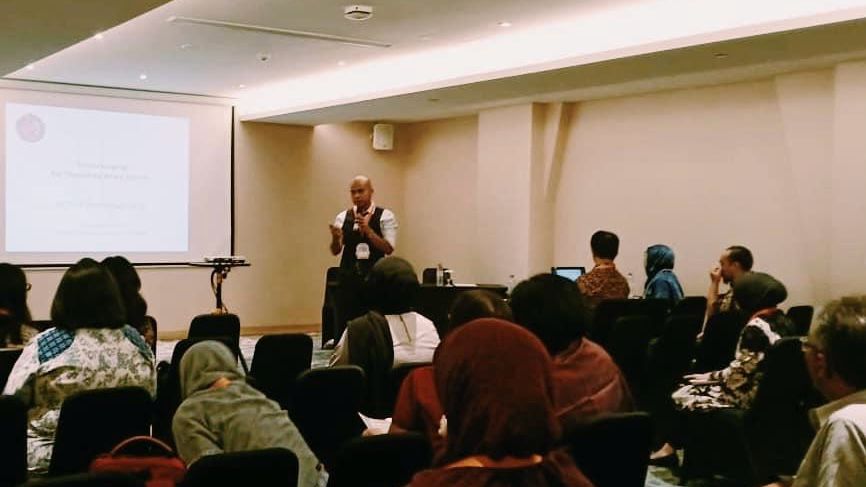I still remember the very first time I submitted a research proposal for government funding. I was unsure, slightly intimidated, and honestly didn’t expect much. But to my surprise, it was accepted. That moment stayed with me—not because it was a big win, but because it taught me a quiet truth: clarity always beats complexity.
Since then, year after year, I’ve continued to receive research grants from the Ministry of Higher Education, Science, and Technology (Kemdiktistek). Not because I’m the best. But because I’ve learned to approach the proposal process not as a competition, but as a conversation—with myself, with my institution, and with the direction I want my academic life to grow.
This isn’t a technical guide. There are plenty of those. This is a personal reflection—something I hope can help fellow lecturers, especially those who feel overwhelmed, unsure, or rushed by the looming deadlines.
It Doesn’t Begin with the Topic
One of the most common mistakes I’ve seen—especially among young lecturers—is treating the opening of the grant call as the starting point for thinking. Suddenly, the question becomes, “What topic should I choose?”
But in my experience, that’s the wrong question.
“A proposal shouldn’t start with a topic. It should start with you.”
Before thinking of what to study, ask yourself:
- What kind of academic identity do I want to build?
- What recognition am I aiming for—not to impress, but to contribute?
- What direction aligns with the vision of my faculty, my department, and my university?
These questions might feel philosophical, but they’re practical. Because once you know what kind of scholar you want to become, your research begins to take shape—naturally, and with purpose.
Start with the Goal, Not the Title
Instead of chasing a catchy title, I always start by defining my long-term goal.
What kind of impact do I want to make in 5–10 years?
Even if the answer feels personal or slightly unconventional, that’s okay. What matters is that it feels true.
“Your proposal doesn’t need to sound impressive. It needs to feel meaningful to you.”
From this clarity, I can then define my research theme—a broad idea that reflects the direction I want to grow in.
And here’s something many overlook:
- A theme is not a topic.
- A topic is not a title.
Write your theme in clear, simple language. No jargon. No need to force academic flair. Just be honest and focused. If your theme doesn’t feel solid yet—pause. Don’t start writing the proposal. Wait until it does.
Before Writing, Build Your Roadmap
Before typing anything into the proposal form, I always sketch a research roadmap.
This roadmap is more than a timeline. It’s a story—a clear narrative of where I’ve been, where I am, and where I’m going.
“Don’t start your roadmap from this year. Start it from the journey you’ve already walked.”
Ideally, your roadmap shows progress from two or three years ago—whether in the form of published work, mentorship, teaching activities, or small research efforts. These don’t have to be grand, but they help show continuity.
I divide my roadmap into three natural stages:
- Basic research
- Applied research
- Development or implementation
Your current proposal should fit clearly into the middle of that journey—not a sudden detour. When the roadmap is logical and aligned with your goal, the proposal writes itself.
Write with Simplicity and Visual Clarity
When writing the actual proposal, many people stress over the budget details or the exact number of samples. My advice? Don’t worry too much about those. Budgets often shift. Sample sizes adjust.
Instead, focus on making your ideas easy to understand—especially visually.
I always include three diagrams:
- The Research Roadmap – a five-year journey
- The Framework – how your variables or themes connect
- The Flow – the step-by-step activities within the research
“If someone can understand your proposal just by looking at your diagrams, you’re on the right track.”
Visual clarity shows maturity. It shows you’ve thought things through—and you’re not hiding behind academic complexity.
A Quiet Closing Thought
Of course, every researcher will walk their own path. What I’ve shared here isn’t a fixed formula. But it’s worked for me—and I hope it can help you, too.
If you’re feeling unsure about your proposal, don’t start with what sounds good.
Start with what feels true to your vision as a scholar.
Let your proposal reflect who you are, where you’ve been, and where you hope to go.
Research, after all, is more than just projects and papers.
Sometimes, it’s a way to grow into the version of ourselves we’re still becoming.
If you found this helpful, feel free to share it with a colleague or student.
And if you’d like, I’m happy to prepare a follow-up post with visual examples of research roadmaps and frameworks—just let me know.



